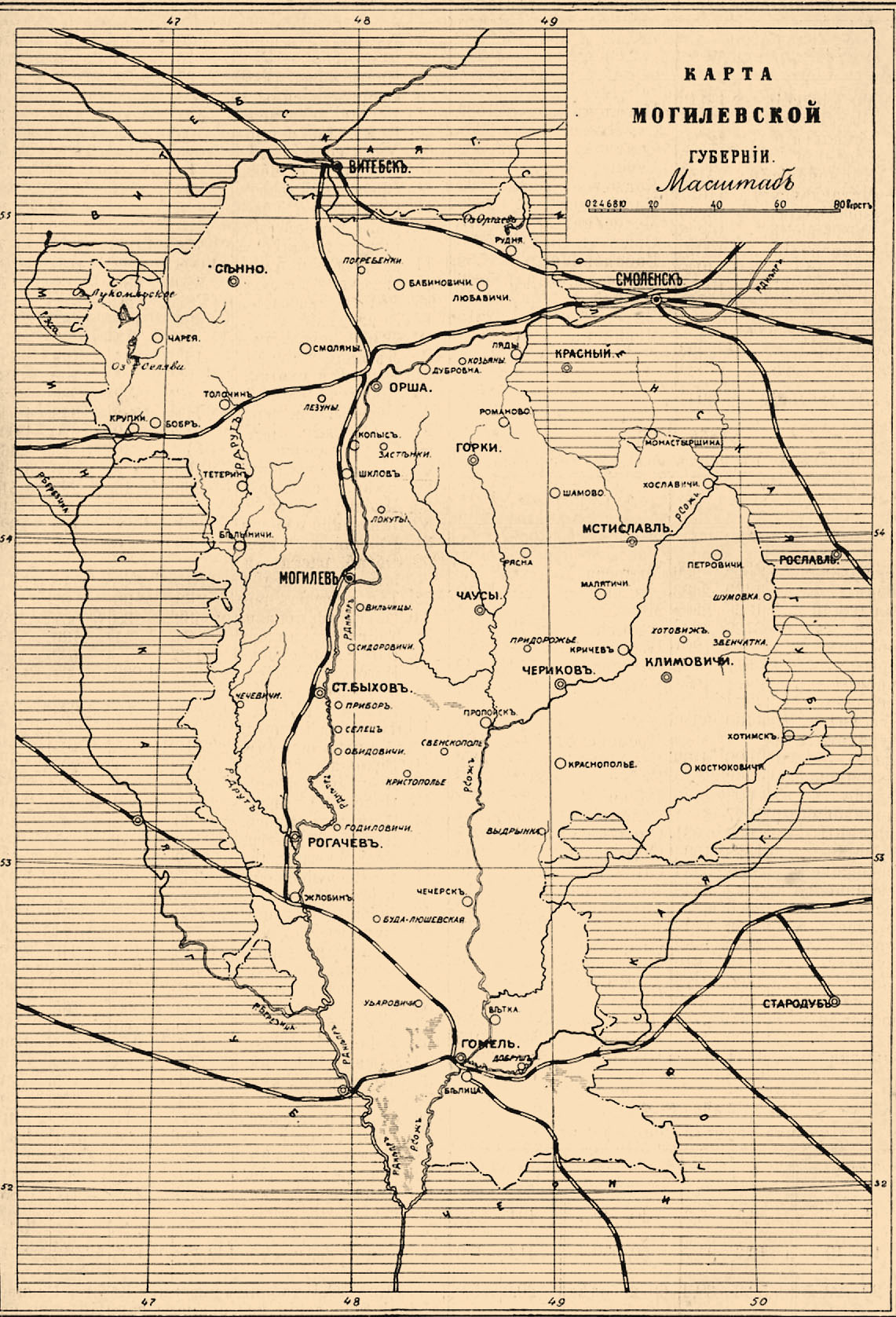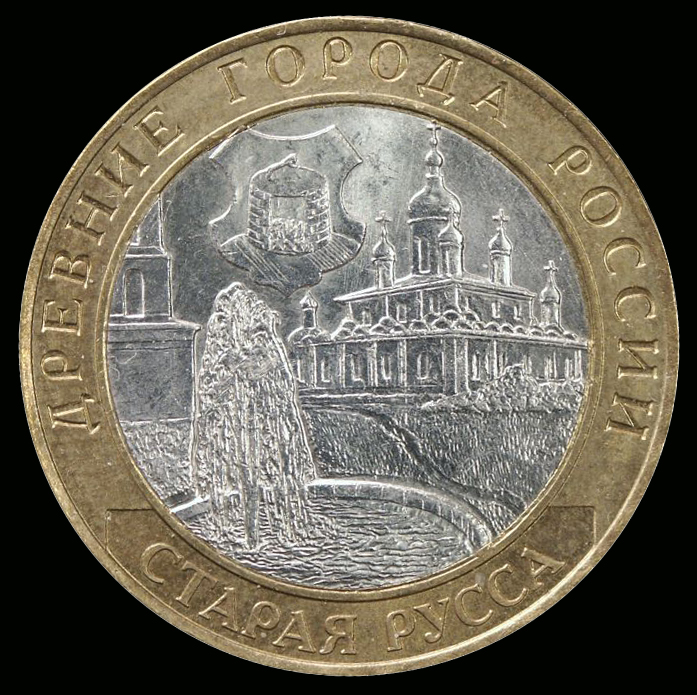|
Military Settlement
Military settlements (russian: Военные поселения) represented a special organization of the Russian military forces in 1810–1857, which allowed the combination of military service and agricultural employment. The beginning of the reform The Emperor Alexander I of Russia (reigned 1801-1825) introduced military settlements in order to set up an inexpensive reserve of trained military forces. Count Alexei Arakcheyev, who had held senior military and political appointments, established the first military settlement (1810-1812) in the Klimovichskiy Uyezd of the Mogilev Governorate (in present-day Belarus). The organization of military settlements got under way on a large scale from 1816. In 1817 Count Arakcheyev officially became the head of all the military settlements ( ru , начальника военных поселений) in Russia. Internal organization The quartered military forces were being formed from among married soldiers, who had already served ... [...More Info...] [...Related Items...] OR: [Wikipedia] [Google] [Baidu] |
Economy
An economy is an area of the production, distribution and trade, as well as consumption of goods and services. In general, it is defined as a social domain that emphasize the practices, discourses, and material expressions associated with the production, use, and management of scarce resources'. A given economy is a set of processes that involves its culture, values, education, technological evolution, history, social organization, political structure, legal systems, and natural resources as main factors. These factors give context, content, and set the conditions and parameters in which an economy functions. In other words, the economic domain is a social domain of interrelated human practices and transactions that does not stand alone. Economic agents can be individuals, businesses, organizations, or government A government is the system or group of people governing an organized community, generally a state. In the case of its broad associative defini ... [...More Info...] [...Related Items...] OR: [Wikipedia] [Google] [Baidu] |
Sloboda Ukraine
Sloboda Ukraine (literally: Borderland of free frontier guards; uk, Слобідська Україна, Slobidska Ukraina), or Slobozhanshchyna ( uk, Слобожанщина, Slobozhanshchyna, ), is a historical region, now located in Northeastern Ukraine and Southwestern Russia. It developed and flourished in the 17th and 18th centuries on the southwestern frontier of the Tsardom of Russia. In 1765, it was converted into the Sloboda Ukraine Governorate. Etymology The name derives from the term '' sloboda'' for a colonial settlement free of tax obligations, and the word ''ukraine'' in its original sense of "borderland". The etymology of the word Ukraine is seen this way among Russian, Ukrainian and Western historians such as Orest Subtelny, Paul Magocsi, Omeljan Pritsak, Mykhailo Hrushevskyi, Ivan Ohiyenko, Petro TolochkoТолочко П. П. «От Руси к Украине» («Від Русі до України»). 1997 and others. It is supported by the Encyclopedia o ... [...More Info...] [...Related Items...] OR: [Wikipedia] [Google] [Baidu] |
Mogilev
Mogilev (russian: Могилёв, Mogilyov, ; yi, מאָלעוו, Molev, ) or Mahilyow ( be, Магілёў, Mahilioŭ, ) is a city in eastern Belarus, on the Dnieper River, about from the border with Russia's Smolensk Oblast and from the border with Russia's Bryansk Oblast. , its population was 360,918, up from an estimated 106,000 in 1956. It is the administrative centre of Mogilev Region and the third-largest city in Belarus. History The city was first mentioned in historical records in 1267. From the 14th century, it was part of the Grand Duchy of Lithuania, and since the Union of Lublin (1569), part of the Polish–Lithuanian Commonwealth, where it became known as ''Mohylew''. In the 16th-17th centuries, the city flourished as one of the main nodes of the east–west and north–south trading routes. In 1577, Polish King Stefan Batory granted it city rights under Magdeburg law. In 1654, the townsmen negotiated a treaty of surrender to the Russians peacefully ... [...More Info...] [...Related Items...] OR: [Wikipedia] [Google] [Baidu] |
Staraya Russa
Staraya Russa ( rus, Старая Русса, p=ˈstarəjə ˈrusːə) is a town in Novgorod Oblast, Russia, located on the Polist River, south of Veliky Novgorod, the administrative center of the oblast. Its population has steadily decreased over the past years, going from 41,538 recorded in the 1989 Census to 35,511 in the 2002 Census to 31,809 in the 2010 Census. Etymology The origin of the name of Staraya Russa is unclear. The most involved and widespread hypothesis was presented by philologists and linguists R. A. Akheyeva, V. L. Vasilyev, and M.V. Gorbanevsky. According to this hypothesis, ''Russa'' comes from Rus'—a Slavic people, who settled in the vicinity to control trade routes leading from Novgorod to Polotsk and Kiev—which, in turn, is usually thought to originate from an Old Norse term for "the men who row" (''rods-'') as rowing was the main method of navigating the rivers of Eastern Europe, and that it could be linked to the Swedish coastal ... [...More Info...] [...Related Items...] OR: [Wikipedia] [Google] [Baidu] |
Volkhov River
The Volkhov (russian: Во́лхов) is a river in Novgorodsky and Chudovsky Districts of Novgorod Oblast and Kirishsky and Volkhovsky Districts of Leningrad Oblast in northwestern Russia. It connects Lake Ilmen and Lake Ladoga and forms part of the basin of the Neva. The length of the river is , and the area of its drainage basin is . The city of Veliky Novgorod, the towns of Kirishi, Volkhov and Novaya Ladoga, and the historically important village of Staraya Ladoga are located along the Volkhov. Etymology A number of etymologies, none universally accepted, have been proposed for the name of the river. In his ''Etymological dictionary of the Russian language'', Max Vasmer doubted some philologists' opinion that the river's name is related to the Finnish ''velho'' ("magician") or Russian ''volkhv'' ("pagan priest"). Geography The Volkhov flows out of Lake Ilmen north into Lake Ladoga, the largest lake in Europe. It is the second largest tributary of Lake Ladoga. It is ... [...More Info...] [...Related Items...] OR: [Wikipedia] [Google] [Baidu] |
Chudovo, Chudovsky District, Novgorod Oblast
Chudovo (russian: Чýдово) is a town and the administrative center of Chudovsky District in Novgorod Oblast, Russia, located on the Kerest River (a left tributary of the Volkhov). Population: History The village of Chudovo was first mentioned in chronicles in 1539. By the mid-18th century, it developed into a big '' selo'' with a postal service station. By the beginning of the 19th century, Chudovo was the seat of Chudovskaya Volost of Novgorodsky Uyezd in Novgorod Governorate. The development of the area was further aided by the construction of the Moscow–St. Petersburg Railway, which opened in 1851. The railway to Novgorod was completed in 1871. A match factory, two cement-making factories, and a number of porcelain factories were built. In August 1927, the uyezds were abolished and, effective October 1, 1927, Chudovsky District was established, with the administrative center in Chudovo.Snytko et al., pp. 85–87 Novgorod Governorate was abolished as ... [...More Info...] [...Related Items...] OR: [Wikipedia] [Google] [Baidu] |
Saint Petersburg
Saint Petersburg ( rus, links=no, Санкт-Петербург, a=Ru-Sankt Peterburg Leningrad Petrograd Piter.ogg, r=Sankt-Peterburg, p=ˈsankt pʲɪtʲɪrˈburk), formerly known as Petrograd (1914–1924) and later Leningrad (1924–1991), is the List of cities and towns in Russia by population, second-largest city in Russia. It is situated on the Neva River, at the head of the Gulf of Finland on the Baltic Sea, with a population of roughly 5.4 million residents. Saint Petersburg is the List of European cities by population within city limits, fourth-most populous city in Europe after Istanbul, Moscow and London, the List of cities and towns around the Baltic Sea, most populous city on the Baltic Sea, and the world's List of northernmost items#Cities and settlements, northernmost city of more than 1 million residents. As Russia's Imperial capital, and a Ports of the Baltic Sea, historically strategic port, it is governed as a Federal cities of Russia, federal city. ... [...More Info...] [...Related Items...] OR: [Wikipedia] [Google] [Baidu] |
Bug Cossacks
The Buh Cossack Host (; ) was a Cossack host, which used to be located along the Southern Buh River. The Buh Cossack Host was formed in 1769 out of Ukrainians, Vlachs, and Bulgarians, who had taken the side of Russia during the Russo-Turkish War of 1768-1774. After the war, the regiment was quartered on the Southern Buh River. In 1788, the Buh Cossack Host became a part of the Yekaterinoslav Cossack Host (disbanded in 1796) and protected the border. It was disbanded in 1800, only to be created again in 1803 under the original name. The Buh Cossack Host had to provide three regiments of 500 men each in the times of war. In 1817, it was included into the military settlements and combined with the two Ukrainian regiments into a Buh Uhlan Uhlans (; ; ; ; ) were a type of light cavalry, primarily armed with a lance. While first appearing in the cavalry of Lithuania and then Poland, Uhlans were quickly adopted by the mounted forces of other countries, including France, Russia, ... [...More Info...] [...Related Items...] OR: [Wikipedia] [Google] [Baidu] |
Novgorod
Veliky Novgorod ( rus, links=no, Великий Новгород, t=Great Newtown, p=vʲɪˈlʲikʲɪj ˈnovɡərət), also known as just Novgorod (), is the largest city and administrative centre of Novgorod Oblast, Russia. It is one of the oldest cities in Russia, being first mentioned in the 9th century. The city lies along the Volkhov River just downstream from its outflow from Lake Ilmen and is situated on the M10 federal highway connecting Moscow and Saint Petersburg. UNESCO recognized Novgorod as a World Heritage Site in 1992. The city has a population of At its peak during the 14th century, the city was the capital of the Novgorod Republic and was one of Europe's largest cities. The "Veliky" ("great") part was added to the city's name in 1999. History Early developments The Sofia First Chronicle makes initial mention of it in 859, while the Novgorod First Chronicle first mentions it in 862, when it was purportedly already a major Baltics-to- Byzantium station ... [...More Info...] [...Related Items...] OR: [Wikipedia] [Google] [Baidu] |
Volost
Volost ( rus, во́лость, p=ˈvoləsʲtʲ; ) was a traditional administrative subdivision in Eastern Europe. In earlier East Slavic history, '' volost'' was a name for the territory ruled by the knyaz, a principality; either as an absolute ruler or with varying degree of autonomy from the ''Velikiy Knyaz'' ( Grand Prince). Starting from the end of the 14th century, ''volost'' was a unit of administrative division in Grand Duchy of Lithuania, Poland, Muscovy, lands of modern Latvia and Ukraine. Since about the 16th century it was a part of provincial districts that were called " uezd" in Muscovy and the later Russian Empire. Each uezd had several volosts that were subordinated to the uezd city. After the abolition of Russian serfdom in 1861, ''volost'' became a unit of peasant's local self-rule. A number of mirs are united into a volost, which has an assembly consisting of elected delegates from the mirs. These elect an elder (''starshina'') and, hitherto, a court of ju ... [...More Info...] [...Related Items...] OR: [Wikipedia] [Google] [Baidu] |
_per_capita_in_2020.png)







